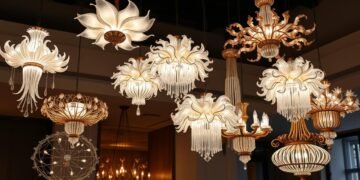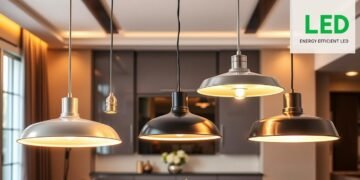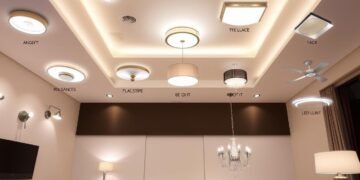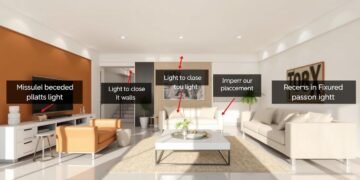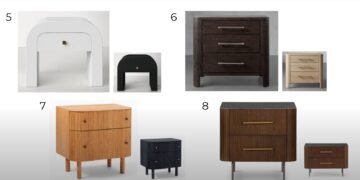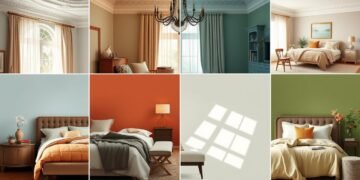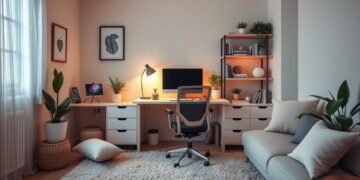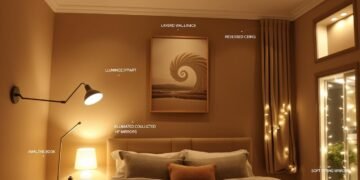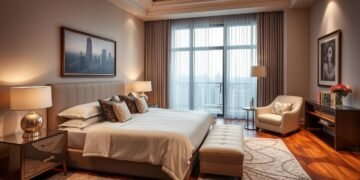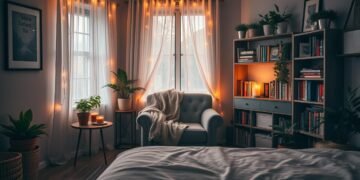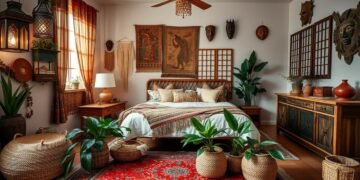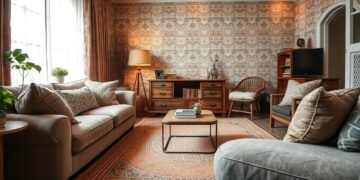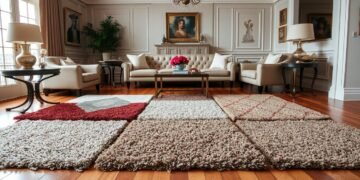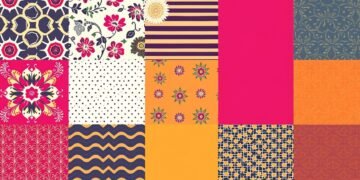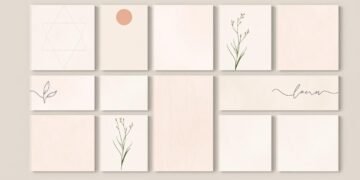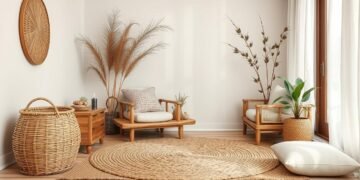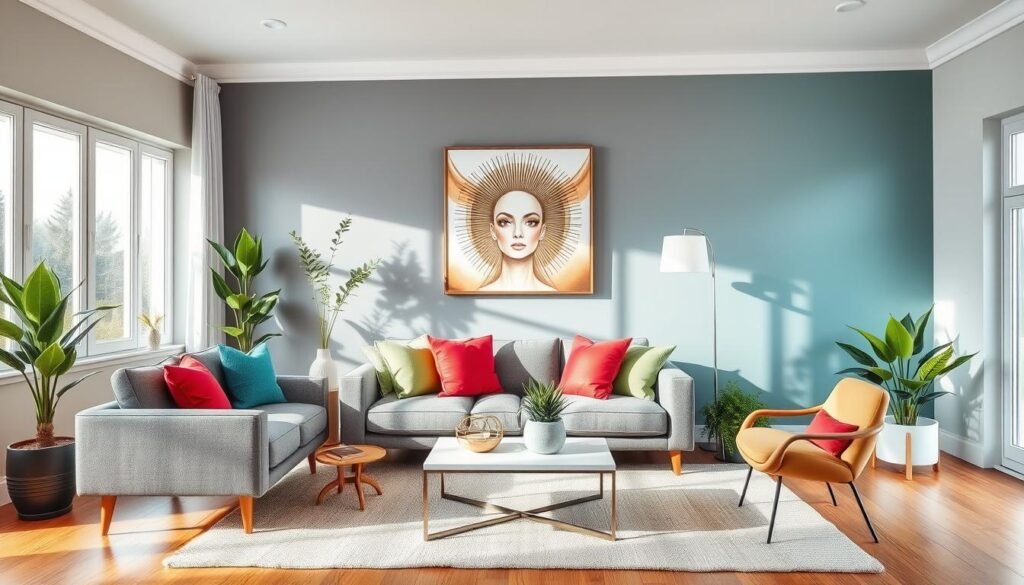Did you know Shea McGee has over 5 million followers? This shows how much people love making their homes beautiful1. In this guide, we’ll show you how to make your home stunning with color, layout, and style.
Interior design is more than just picking furniture. It’s a mix of creativity and skill to make spaces that are both beautiful and useful. We’ll cover space planning, color theory, furniture layout, and lighting design to make your room special.
Are you ready to start your design journey? We’ll teach you the key principles to design your living spaces. Whether you like DIY projects or want professional help, these basics will guide you to a beautifully designed home.
Table of Contents
- 1 Understanding Interior Design Fundamentals
- 1.1 Relatedarticles
- 1.2 10 Creative Ways to Incorporate Texture & Pattern for Depth and Visual Interest in Your Décor
- 1.3 From Flat to Fabulous: 5 Ways Textured Rugs Bring Depth and Style to Interior Design
- 1.4 7 Accent Pillow Patterns That Elevate Any Sofa or Bed in Your Home
- 1.5 Core Design Principles
- 1.6 Role of Professional Design
- 1.7 Impact on Living Spaces
- 2 Space Planning and Balance
- 3 Color Theory in Interior Design
- 4 Creating Focal Points and Emphasis
- 5 Furniture Selection and Placement
- 6 Lighting Design Principles
- 7 Material Selection and Textures
- 8 Pattern and Visual Rhythm
- 9 Room Layout Fundamentals
- 10 Design Elements and Unity
- 11 Window Treatments and Drapery
- 12 Accessorizing and Styling
- 13 Sustainable Design Practices
- 14 Art and Wall Decor Placement
- 15 Proportion and Scale Mastery
- 16 Conclusion
- 17 FAQ
- 17.1 What are the seven basic principles of interior design?
- 17.2 How can I create a focal point in my room?
- 17.3 What’s the importance of color theory in interior design?
- 17.4 How do I choose the right furniture for my space?
- 17.5 What are some sustainable design practices I can incorporate?
- 17.6 How can I improve the lighting in my home?
- 17.7 What’s the best way to hang artwork?
- 17.8 How can I make a small space feel larger?
- 17.9 What’s the importance of texture in interior design?
- 17.10 How do I create a cohesive design throughout my home?
Key Takeaways
- Understand the core principles of interior design
- Learn about space planning and balance techniques
- Explore color theory and its impact on room ambiance
- Discover tips for effective furniture selection and placement
- Get insights on lighting design and material selection
- Understand the importance of proportion and scale in design
- Learn sustainable design practices for eco-friendly interiors
Understanding Interior Design Fundamentals
Interior design turns living spaces into beautiful and useful places. It’s based on seven key principles. These guide experts in making interiors that look good and work well.
Core Design Principles
The seven essential design principles are unity, balance, rhythm, harmony, emphasis, scale and proportion, and details. These principles help create spaces that are both beautiful and functional2. Designers use them to balance visuals and add decorative elements smoothly.
There are three main ways to achieve balance in design: symmetrical, asymmetrical, and radial. Each method has its own way of distributing visual weight and making a room harmonious2. For example, radial formats are popular in modern design3.
Role of Professional Design
Interior designers are key in changing spaces. They think about room size, door and window placement, and the balance between empty and filled spaces. With new tech, designers use 3D programs to plan and visualize spaces more accurately3.
Impact on Living Spaces
Design principles greatly affect living areas. Color choices, for instance, can change how we feel. Cool colors like blues and greens make spaces calm, while warm colors like reds and yellows energize them4. Textures in homes show off the owner’s personality and interests, adding depth and character3.
Lighting is also vital in interior design. Bright lights are best in kitchens, living rooms, and dining rooms. They make these areas more functional and welcoming3. By understanding these basics, you can make spaces that are not just pretty but also practical and eco-friendly.
Space Planning and Balance
Space planning is at the heart of interior design. It’s about organizing spaces to be both functional and beautiful5. When making floor plans and arranging furniture, remember the room’s size and where doors and windows are.
Positive vs Negative Space
Designers use both positive space (where objects are) and negative space (empty areas). Finding the right balance is essential. In the UK, homes average 76m2, while in the US, they’re 201m26.
About 80% of a room is for living, 10% for passage, and 10% for storage6.
Symmetrical Balance Techniques
Symmetrical balance creates a mirrored look, giving a classic feel. It involves placing furniture the same on both sides of a room. This works well in traditional designs and makes small spaces look better.
Asymmetrical Design Approaches
Asymmetrical balance is more flexible and modern. It spreads visual weight unevenly but keeps things balanced. This method lets you be creative with furniture and create unexpected highlights.
When planning, remember hallways should be 1-1.5 meters wide for easy movement6.
Whether you’re working with designs or real spaces, using these space planning and balance tips makes interiors both functional and beautiful5. Learning these basics helps you handle different design tasks in homes and businesses.
Color Theory in Interior Design
Color theory is the foundation of interior design. The color wheel is a key tool for designers. It includes primary, secondary, and tertiary colors. Primary colors are red, blue, and yellow. Secondary colors are green, orange, and purple, made by mixing primaries7.
Knowing these basics helps you create harmonious color schemes. This makes your space look good.
Designers use various color schemes. Monochromatic designs use different shades of one color. Analogous schemes use colors next to each other on the wheel. Complementary colors are opposite each other, creating bright contrasts7.
These schemes help balance and add interest to your rooms.
Color psychology is also important in design. Warm colors like reds and oranges make spaces feel cozy and energetic. Cool colors like blues and greens are calming, great for bedrooms or offices7.
Choosing the right paint colors can change a room’s mood. So, pick carefully.
In homes, trends include richer browns, vibrant crimsons, and warm peaches. Commercial spaces use colors that match the brand and appeal to the audience8. Remember, color trends change fast, so be open to new ideas.
| Color Distribution | Percentage | Purpose |
|---|---|---|
| Dominant Color | 60% | Main theme |
| Secondary Colors | 30% | Supporting elements |
| Accent Colors | 10% | Decorative touches |
For balanced color use, designers follow a 60-30-10 rule. This means 60% dominant color, 30% secondary colors, and 10% accent hues8. This balance avoids overwhelming spaces with too much color.
Understanding color temperature is essential. Warm colors like reds and yellows make spaces cozy. Cool colors like blues and greens are calming. Try different temperatures to find the right mood for each room.
Creating Focal Points and Emphasis
In home design, focal points are key to guiding the eye and adding interest. Designers use many methods to highlight areas, mixing natural and artificial elements for eye-catching results.
Natural Focal Points
Interior designers often use existing architectural features as focal points. Over 50% of them use fireplaces, arches, and built-in shelves to draw attention9. These elements act as natural centerpieces, guiding furniture placement and anchoring the design.
Architectural Features
Without natural focal points, designers turn to architectural elements. They might add a feature wall, install custom built-ins, or highlight unique ceiling details. 70% of designers use large furniture or oversized artwork to draw the eye and create impact9.
Decorative Elements
Accessories and decor items are vital in setting focal points. 80% of designers use color, texture, and patterns to create emphasis9. Lighting is also key, with 65% of designers seeing it as essential for highlighting features9. By placing furniture and accessories thoughtfully, 70% of designers guide the viewer’s eye9.
| Design Element | Percentage of Designers Using | Impact on Focal Points |
|---|---|---|
| Color, Texture, Patterns | 80% | Creates visual interest and emphasis |
| Lighting | 65% | Highlights key features |
| Furniture Placement | 70% | Guides viewer’s eye |
| Contrasting Colors/Materials | 75% | Emphasizes specific areas |
To add depth and interest, 60% of designers layer different design elements9. This method works in both homes and commercial spaces, allowing for flexibility in design styles. Remember, starting with the focal point is key, as it greatly influences the overall design10. By using these techniques, you can create interiors that are stunning and inspiring.
Furniture Selection and Placement
Choosing and arranging furniture is key in residential interior design. It affects both looks and use of your spaces. Think about how each piece fits into the room’s design psychology when picking furniture.
Scale and Proportion
Furniture size is important for balanced spaces. Big pieces can make small rooms feel cramped, while small ones get lost in big areas11. Mixing sizes adds interest and depth to your design12. Experts say 80% of the time, mixing sizes helps balance and add dimension.
Traffic Flow Considerations
Always think about how people will move around when placing furniture12. 74% of pros say it’s key for comfort and avoiding blocks. Make sure there’s enough room between pieces for easy walking1211. 92% believe good furniture placement makes rooms more comfortable, and spacing makes them look and work better.
Mixing Furniture Styles
It’s okay to mix furniture styles for a unique look. Mix textures, finishes, and designs to add character. Make sure the textiles and finishes match the design theme.
| Room Type | Furniture Arrangement Tips |
|---|---|
| Living Room | Face seating towards a focal point, use rugs to define conversation areas |
| Dining Room | Center the table, ensure space for chair movement |
| Bedroom | Position bed against a wall, include nightstands |
| Home Office | Place desk near power sources and natural light, use ergonomic furniture |
Remember, furniture placement should be functional and look good in both homes and offices12. 84% of people focus on function when designing, making sure furniture is useful and comfortable.
Lighting Design Principles
Lighting design is key in interior design, setting the mood and use of spaces. There are three main types of lighting: ambient, task, and accent. Each has its own role, from general lighting to focusing on certain areas or objects13.
When picking light fixtures, think about both looks and use. For instance, pendant lights over a dining table should be about 30 inches above the table for the best look13. This rule works for many decor styles, from modern to traditional.
The color of the light greatly affects a room’s feel. Warm light (2700K-3000K) makes a space cozy, great for traditional or contemporary rooms. Cool light (5000K-6000K) makes an area lively, perfect for minimalist or modern designs13.
Energy-saving is important in lighting design. LED bulbs use up to 90% less energy than old bulbs, making them good for those who care about the environment13. This meets the growing need for green lighting in homes and businesses14.
Common Lighting Mistakes to Avoid
- Over or under lighting spaces
- Ignoring the room’s function when choosing lighting
- Using only one type of lighting
- Neglecting light color temperature
To get better at lighting design, think about getting special training. The Master of Professional Studies in Lighting Design at the New York School of Interior Design offers flexible learning for professionals15. These courses teach you about lighting in interior design, covering texture, materials, and decor styles.
| Lighting Type | Purpose | Example |
|---|---|---|
| Ambient | Overall illumination | Ceiling fixtures, wall sconces |
| Task | Specific activities | Desk lamps, under-cabinet lights |
| Accent | Highlighting features | Track lighting, picture lights |
Good lighting design is about finding a balance between looks and function. By knowing these basics, you can make spaces that look good and work well, no matter the design style.
Material Selection and Textures
Choosing the right materials and textures is key for stylish and functional interiors. Whether you prefer mid-century modern or Scandinavian styles, your choices greatly impact the design. Let’s look at how different materials and textures can enhance your space’s look and function.
Natural Materials
Natural materials add warmth and authenticity to your space. Wood, stone, and natural fibers are favorites for their character and eco-friendliness16. In minimalist designs, natural wood, glass, and neutral colors create a sleek yet elegant look16. For a rustic feel, consider adding natural stone, wrought iron, and jute or sisal rugs16.
Synthetic Options
Synthetic materials are great for modern interiors because they’re affordable, durable, and easy to clean16. They’re ideal for busy areas or places that need frequent cleaning. For example, porcelain tiles are durable, stain-resistant, and easy to clean, making them a smart choice for many projects16.
Texture Layering
Layering textures adds depth and interest to your space. Rugs, carpets, and tapestries can quickly change a room’s mood17. Textiles like curtains, throw pillows, and blankets add comfort and coziness16. For a luxurious touch, consider marble, velvet, silk, or polished wood16.
| Design Style | Recommended Materials | Textures |
|---|---|---|
| Mid-century Modern | Wood, Glass, Leather | Smooth, Sleek |
| Scandinavian | Light Wood, Wool, Cotton | Soft, Natural |
| Boho | Rattan, Jute, Macramé | Rough, Woven |
| Industrial | Metal, Concrete, Reclaimed Wood | Raw, Unfinished |
When designing your space, use tools like AutoCAD or SketchUp to see how materials and textures work together. These tools let you create 3D models of your space. This way, you can try out different combinations before making your final choices.
Pattern and Visual Rhythm
Pattern and visual rhythm are key in making your home design stand out. They help guide your eye, adding interest and depth. By understanding these, you can make your living areas look great and feel harmonious18.
Rhythm in design means repeating or changing elements like color, pattern, and texture. This creates movement and harmony, guiding your eye smoothly1819. For instance, using the same color or picture frames can create rhythm19.
Adding patterns and textures is essential for depth and interest. Try different flooring types for zones or bold wallpaper on accent walls. Accessories like throw pillows or rugs can also add to your design18.
To make your design flow, use elements that grow or change in size or color. This could be different pillow sizes or a wall gallery with changing colors. Techniques like ombre walls or gradual ceiling heights help guide the eye19.
| Rhythm Type | Description | Example |
|---|---|---|
| Repetition | Consistent use of elements | Identical picture frames |
| Progression | Sequence of evolving elements | Varying pillow sizes |
| Transition | Smooth guidance of the eye | Ombre walls |
| Contrast | Pairing opposites | Minimalist scheme with bold accent |
For sustainable design, choose eco-friendly materials that add to your visual rhythm. Options like reclaimed wood or recycled glass tiles are both stylish and green. Also, use rhythm to define areas and improve traffic flow for better function18.
Rhythm is more than looks; it brings harmony and completeness to your space. By carefully adding these elements, you can create interiors that are both beautiful and practical20.
Room Layout Fundamentals
Understanding room layout basics is key to making spaces both functional and beautiful. These principles are the foundation of interior design and have evolved over time. They shape how we live today.
Space Zoning
Space zoning means dividing a room into different areas for different activities. This idea comes from design psychology, which shows that clear spaces make us more comfortable and productive. When setting up a room, remember to leave enough space between big furniture pieces. This space should be 30-36 inches, but can be less in smaller rooms21.
Furniture Arrangements
Choosing the right furniture arrangement is essential for a room’s look and feel. Seats should be between 3 and 10 feet apart for good conversation21. Make sure there’s 14-18 inches of space between a coffee table and the sofa21. These rules help create a balanced and pleasing space, following the principles of proportion and scale in design22.
Activity Centers
Setting up activity centers in a room makes it more useful and follows universal design principles. For example, you might have a reading nook or a workspace in a living room. Make sure the sofa and TV are about 7 feet apart for the best view21. Adding enough storage helps keep the space organized and supports different activities23.
| Element | Recommended Dimensions |
|---|---|
| Sofa Length | 72, 84, or 96 inches |
| Sofa to Wall Ratio | 2/3 of wall length |
| Coffee Table Length | 2/3 of sofa length |
| Coffee Table Height | Within 3 inches of sofa seat height |
By sticking to these room layout basics, you can make spaces that look good and work well. Don’t forget to think about acoustic design when planning. It’s important for the comfort and use of any space.
Design Elements and Unity
Learning about design principles and elements is essential for amazing home decor. Unity and harmony are key to great interior design. They bring together different parts into a single, beautiful whole24.
When setting up your room, pick three to five colors for harmony. Using different shades within this range avoids a too-matched look. It makes your space feel more natural24. This method also helps in picking paint colors that work well together.
Unity goes beyond just colors. It includes materials, furniture sizes, and shapes. Repeating decorative elements in connected spaces creates a smooth flow25. This means using the same finishes, matching furniture styles, or matching material tones in different areas.
It’s okay to add unique elements to your design. A standout piece of art or a bold furniture item can make your space special while keeping it harmonious24. These special touches add character and depth to your design.
| Design Element | Purpose | Example |
|---|---|---|
| Color Palette | Create harmony | 3-5 complementary hues |
| Texture | Add dimension | Mix of smooth and rough surfaces |
| Pattern | Enhance visual interest | Coordinated wallpaper and fabrics |
| Scale | Ensure proper proportions | Furniture sized to room dimensions |
Unity doesn’t mean everything has to match exactly. The aim is to make a space that feels complete and thoughtful. Take a step back often to check if your room feels balanced. Look for areas that might need tweaking to enhance your space’s harmony24.
Window Treatments and Drapery
Window treatments are key in making spaces functional and bright. They add warmth, style, and usefulness to rooms. They also match well with your furniture.
Curtain Placement Rules
Getting curtain placement right is important for a neat look. Drapery panels should be twice the window’s width when together26. Place curtain rods 4-6 inches above the window or at the ceiling for height.
Floor-to-ceiling curtains should be just above the floor. But, they can be 1 to 3 inches up for a more casual feel26.
Style Selection Guide
Think about style and function when picking window treatments. Light curtains are good for living rooms. Blackout shades are best for bedrooms for privacy and light control26.
Sheer fabrics offer privacy and a chic, airy feel. They come in different opacities27. Many use blinds or shades first and curtains for extra interest26.
Fabric Considerations
Choosing the right fabric is key for the room’s look and feel27. Mix textures for a unique design. Thicker fabrics block light and keep warm. Lighter ones let in more sun.
Make sure drapery rods can hold the fabric’s weight27.
| Window Treatment | Best For | Key Features |
|---|---|---|
| Curtains | Living rooms, bedrooms | Versatile, decorative |
| Blinds | Offices, kitchens | Light control, easy maintenance |
| Shades | Bedrooms, bathrooms | Privacy, insulation |
| Shutters | Exterior applications | Durability, home value increase |
If unsure, get professional advice for the best window treatments. Think about placement, style, and fabric. Your window treatments will enhance your design and serve their purpose well.
Accessorizing and Styling
Make your space stand out with the right accessories and styling. Add warmth and color with throw pillows, rugs, and curtains. Vases, books, and bowls bring interest to your living room28.
When choosing accessories, think about their size and the room’s scale. Group items in odd numbers for a nice look. Mix heights, textures, and materials to add depth.
In bedrooms, use the 60-30-10 color scheme rule. Use 2 pillows for a settee and 4 for a sofa for balance29. Choose sustainable accessories for a unique touch28. Lighting can highlight areas and set the mood28.
Style bookshelves by layering accessories for depth. Start with a big piece on fireplace mantels. Add asymmetry and varied heights for interest29. For tables, start with three items and add more as needed. Use trays for decorating29.
“Accessories are the jewelry of the home, adding personality and charm to any space.”
Avoid overcrowding28. Keep dining tables clear for easy talking29. Update your decor seasonally for a fresh look28. Repeat secondary colors in pillow combinations for a cohesive look29.
| Accessory Type | Styling Tips | Benefits |
|---|---|---|
| Throw Pillows | Mix patterns and textures | Adds comfort and color |
| Rugs | Layer different sizes | Defines spaces and adds warmth |
| Vases | Group in odd numbers | Creates visual interest |
| Books | Stack horizontally and vertically | Adds personality and texture |
Follow these tips to make a space that shows your personality. It should be both stylish and functional. The goal is to create a welcoming and balanced space30.
Sustainable Design Practices
Sustainable interior design is becoming more popular. Designers and homeowners see its positive impact on our planet. By focusing on space flow and eco-friendly practices, you can make beautiful spaces that are good for the environment.
Eco-friendly Materials
It’s important to choose sustainable materials for eco-conscious design. Bamboo, restored woods, natural stones, and recycled aluminum are great choices. These materials are good for the planet because they can be renewed, recycled, and biodegradable31.
Carpets made from ECONYL® nylon yarn are also a good option. This yarn comes from waste materials like old fishing nets32.
Energy Efficiency
Designing for energy efficiency helps reduce our carbon footprint. Switch to LED or CFL bulbs instead of traditional ones. Also, use natural light as much as possible to cut down on artificial lighting31.
Using lighter colors can also help. They reflect more light, which means you need less artificial lighting in rooms with reflective surfaces32. The US Energy Information Administration says we’ll use 36% less energy for lighting in commercial buildings by 205033.
Sustainable Furniture
When picking furniture, choose sustainable options. Herman Miller’s Aeron chair now uses recycled ocean-bound plastic. This shows how classic designs can be made better for the planet33.
Look for furniture made from reclaimed materials or certified by eco-friendly organizations.
| Sustainable Design Element | Benefit |
|---|---|
| Carpets with ECONYL® yarn | Made from recycled waste, 100% regenerable |
| Light-colored reflective surfaces | Reduce need for artificial lighting |
| LED/CFL bulbs | Lower energy consumption |
| Sustainable furniture | Reduces environmental impact |
By using these sustainable design practices, you’re doing more than just decorating. You’re helping make our planet healthier. Sustainable interior design is about making choices that are good for both beauty and the environment.
Art and Wall Decor Placement
Mastering art placement is key when designing with natural light and creating cozy interiors. For beginners, the 57-inch rule is a great starting point. This guideline suggests hanging the center of your artwork about 57 inches from the floor, aligning with average eye level3435.
When arranging art above furniture, aim for pieces that are at least two-thirds the size of the sofa or sideboard. This creates a balanced look and ties the room together35. For standalone walls, multiply the wall’s length and width by 0.571 to determine the ideal artwork size35.
Gallery walls are a fantastic way to showcase multiple pieces. Keep about 3 inches of space between each item to avoid overcrowding36. Start with a large anchor piece and build around it, mixing horizontal and vertical pieces for visual interest36.
Don’t be afraid to get creative with your wall decor. Mix frame styles, incorporate unframed pieces, or add textiles and sculptural items. These decorative accessories in interior design can add depth and personality to your space36.
Remember, art placement is about creating a cohesive visual story in your room. Consider the overall layout, color scheme, and existing architectural features when deciding where to hang your pieces. With these tips, you’ll be well on your way to mastering this fundamental aspect of interior design.
Proportion and Scale Mastery
Mastering proportion and scale is key to creating balanced interiors. When planning your design, think about how each piece fits in the space37.
Room Proportions
Understanding room proportions is vital for good design. It’s about balancing furniture, decor, and architectural features in the room37. Use the golden ratio (1:1.618) to guide pleasing proportions. This helps create spaces that look balanced and beautiful.
Furniture Scaling
Choosing the right-sized furniture is essential for a well-proportioned room. Make sure furniture fits the room’s size and design37. Try different furniture setups to improve both function and look in your living areas38.
Decorative Element Sizing
Size is important for decorative elements. Don’t use tiny accessories in big rooms or huge pieces in small ones. Instead, focus on balance through arrangement. Use focal points and arrange elements for harmony and flow38. Think about how texture and lighting affect scale and proportion in your design.
“In interior design, mastering the art of space is key for creating balanced and engaging spaces.”
By using these principles, you can make spaces that look good and feel comfortable. The secret is finding the right balance in your design.
Conclusion
Learning the basics of interior design is essential for making spaces that look good and work well. By using balance, proportion, and contrast, you can turn any room into a special place. Good design mixes creativity with usefulness, making spaces that look good and are easy to live in39.
To set the mood in a room, think about color, texture, and light. These elements help decide how a space feels. As we look to 2024, remember that design should be both beautiful and useful. Aim for a mix of looks and function in your room design40.
Making your space your own is more than just following rules. It’s about adding your own style everywhere. When picking furniture, choose pieces that are both stylish and useful. By carefully applying these design tips, you’ll make a home that shows off your personality and improves your life.

